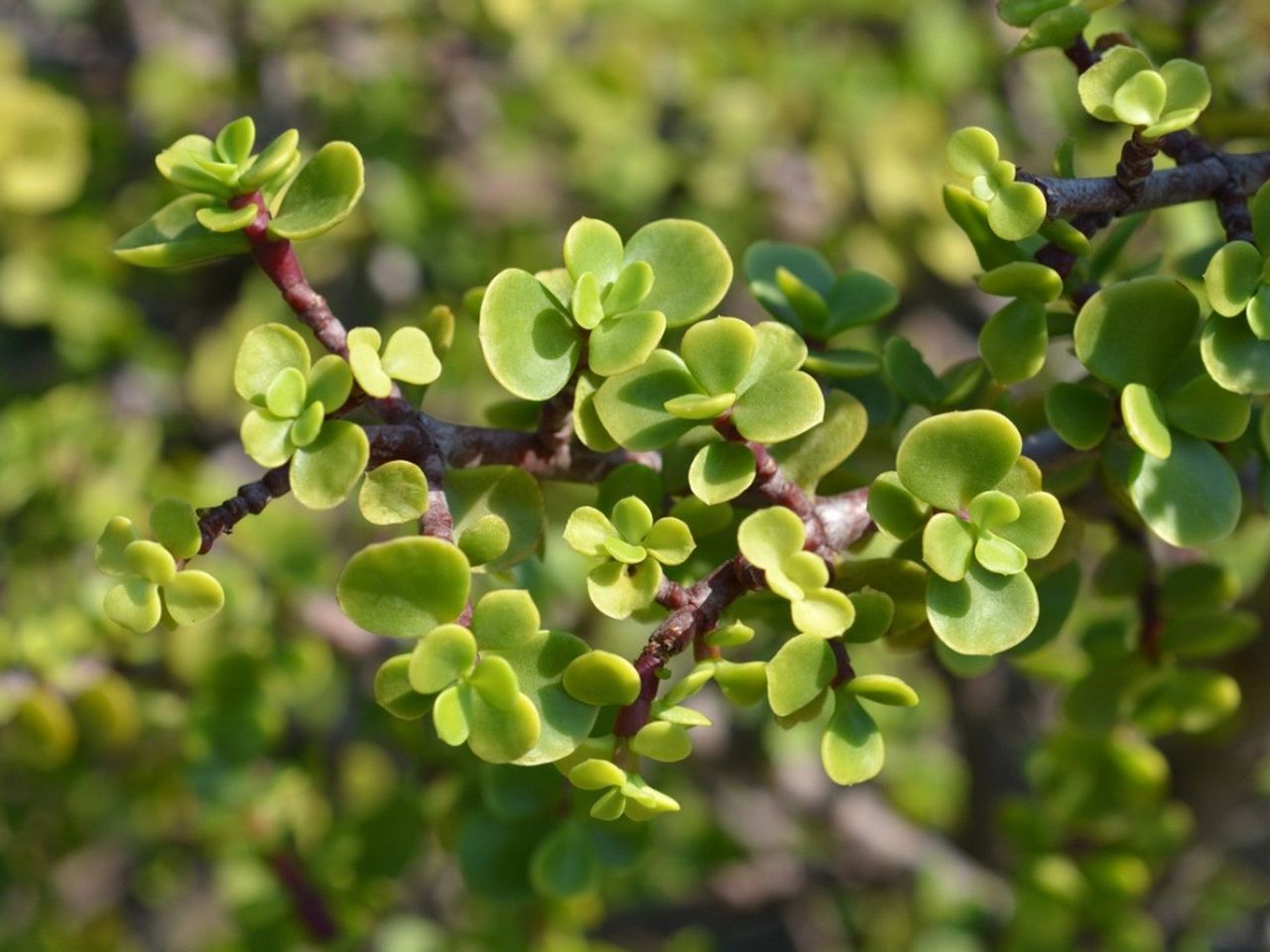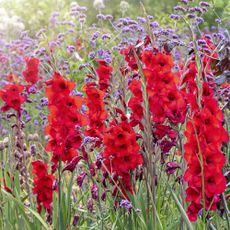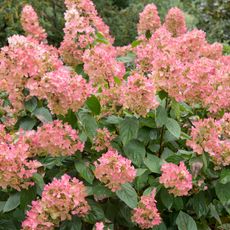Growing Elephant Bush Indoors: How To Care For Elephant Bush Houseplants

Native to South Africa, Portulacaria afra or elephant bush plant is a versatile perennial succulent with fleshy, glossy leaves that grows as a small bush. Hardy only in USDA plant hardiness zones 10 and 11, it can be grown much like a bonsai, in a hanging basket or outside directly in the garden.
This multifaceted plant is a favorite food for elephants, but also a favorite of the people of South Africa who use the tart foliage in soups and salads, and to treat a variety of ailments as well. Not only people and elephants enjoy eating the succulent leaves of elephant bush, so do goats and other animals. Because of this, overgrazing is common, leading to a difficulty in germination of the elephant succulent in its native region of South Africa.
Quick Facts about Elephant Bush
- Botanical name: Portulacaria afra
- Height: 8-20 feet (2.4-6 m)
- Spread: 4-6 feet (1.2-1.8 m)
- Sun exposure: Full to partial sun outside/ direct to indirect sun inside
- Soil requirements: Well-draining
- Hardiness zones: 10-11
- When to plant: Spring after all danger of frost has passed
What is Portulacaria afra?
This herbaceous succulent is also referred to as P. afra, elephant food, elephant plant, dwarf jade, miniature jade or small leaf jade, porkbush, spekboom and others. Most often it is grown as a seasonal accent plant or houseplant.
As a few of its common names suggest, P. afra has small, rounded, and thick leaves much like jade plants. However, unlike jades, P. afra thrives in full sun. Growing from green to red-hued stems, its small leaves are edible and crunchy, with a mildly tart flavor due to the concentration of malic acid.
The elephant succulent blooms in the spring to early summer with innocuous, small, pink flowers on terminal spikes. Interestingly, flowering is promoted by cultural stresses like being pot bound.
Types of Elephant Bush Succulent
There are many varieties of this plant, although most are not available at the local nursery. Keep in mind that variegated varieties tend to be smaller than green ones. Look for Aurea, a compact specimen with yellow leaves, or Cork Bark, perfect when grown as a bonsai.
Foliis variegatis is a slow growing variegated form of the plant, ideal for growing in a container, while the Limpopo has larger leaves than other cultivars. Medio-picta is a variegated variety with green leaves accented with white and brilliant red stems.
Gardening tips, videos, info and more delivered right to your inbox!
Sign up for the Gardening Know How newsletter today and receive a free copy of our e-book "How to Grow Delicious Tomatoes".
Prostrata or Low Form elephant plants are great for growing as ground covers. Portulacaria variegata is a compact, upright succulent with white to cream edging along pale green leaves, accented in pink. This variety does not like bright sun as much as other cultivars. After a dormant period in winter, the bush produces small pink flowers grouped in clusters at the ends of the branches.
A Large Houseplant and Natural Air Purifier
In its natural habitat, elephant bush can grow up to 20 feet (6 m) in height and as many as 6 feet (1.8 m) across, or even wider. In the home interior, it is more likely to remain just a few feet (around 1 m) tall. The bush has thick succulent brown stems with small tender green leaves that resemble a diminutive jade plant.
Depending on the variety, of which there are many, the elephant bush may have a habit that is upright to spreading. An excellent specimen for use as a houseplant, like many succulents, P. afra uses crassulacean acid metabolism to fix CO2. What this means is that it efficiently uses more carbon from the air than other plants, making it a natural air purifier for your home.
How to Grow Elephant Succulent
Elephant bush houseplants thrive in bright light in a warm, draft free room. A few rules on how to care for elephant bush will help you grow a specimen that may be a standalone plant or part of an intricate succulent garden.
Light
Choose a location with indirect sunlight when growing elephant bush indoors. Overly bright sunlight can char the leaves and cause them to drop off.
Inside, the best location is by a south-facing window although a little experimentation might be in order; too much direct sun will result in yellow to red tipping of the leaves.
Soil
Like most succulents, these plants need well-drained soil and an unglazed pot that will help excess moisture evaporate. The best mixture for this type of plant is cactus soil or potting soil cut by half with vermiculite or pumice. Other choices can be pea gravel, poultry grit or other non-porous materials. Avoid using sand in the mix.
If you reside in a warm region where this plant thrives outdoors, be sure to dig in about 3 inches (8 cm) of gritty material to provide well drained soil.
Temperature
Plants grown indoors during inclement weather can be moved outside when temperatures warm sufficiently. Gradually acclimate or “harden off” the plant before moving it permanently outside. When temperatures approach 40 F (4 C) at night, move the plant back inside, at which point the plant may lose some leaves but it’s nothing to worry about.
Water
The most common mistake made with succulent plants is watering. They are drought tolerant but do require consistent watering from mid spring to mid autumn. In winter, the plants are dormant and do not need to be watered. The elephant bush succulent is susceptible to root rot, so it’s important to allow the soil to dry completely between waterings and never let it sit in water.
Elephant Bush Propagation
The elephant plant is propagated by seed and from asexual propagation. This means when the plant drops a branch or leaf it will take root and become a new plant.
Although it can be grown from seed, this succulent is more commonly grown from cuttings which can easily root within 4-6 weeks. Take cuttings in spring or summer and allow the cut ends to dry at room temperature for a couple of days to form a callus.
The cutting can then be planted in soil or rooted in water. Place the potted cutting in a moderately lit area where temperatures are at least 65 degrees F (18 C). Keep the soil lightly moist and in a few weeks the cutting will root, and you will have a new elephant bush succulent plant.
How to Care for Elephant Bush
Fertilizing and Repotting
During the growing season, fertilize your elephant succulent plant monthly. In late winter to early spring feed the plant with an indoor plant fertilizer diluted by half. When you see roots growing out of the container’s drainage holes, it is time to repot your plant.
Pests
Elephant plants have few pests, although mealybugs may be an issue. Do not use pesticide spray which can kill or damage succulents. A mild, homemade pesticide solution works best. Watch for pests like whitefly, spider mites, and mealybugs.

Bonnie Grant is a professional landscaper with a Certification in Urban Gardening. She has been gardening and writing for 15 years. A former professional chef, she has a passion for edible landscaping.
- Amy GrantWriter
-
 7 Summer-Blooming Bulbs To Plant In Early Spring: Don't Miss Months Of Glorious Flowers!
7 Summer-Blooming Bulbs To Plant In Early Spring: Don't Miss Months Of Glorious Flowers!Get a head start on stunning summer blooms with these easy-to-plant bulbs – act early and you will enjoy vibrant flowers that last for months on end.
By Mary Ellen Ellis
-
 Early Blooming Hydrangeas: Grow A Quick Fire Hydrangea For A Long Season Of Interest
Early Blooming Hydrangeas: Grow A Quick Fire Hydrangea For A Long Season Of InterestIf you’re after an early flowering panicle hydrangea that offers plenty of floral variety, the Quick Fire hydrangea goes big on visual dynamics from early summer to fall
By Tonya Barnett

